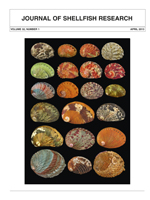Because abalone feed mainly on macroalgae, the disappearance of macroalgal beds would have negative effects on abalone. We investigated the relationship between abalone resources and quantitative or qualitative changes of algal beds in coastal waters around the Ojika Islands, Nagasaki Prefecture, southwestern Japan, from 1988 to 2011. During this period, the catch record of 2 abalone species—Haliotis discus discus and Haliotis gigantea—was examined, and the composition and abundance of macroalgae around the Ojika Islands was observed. The annual landing of abalone has decreased steadily from 91 mt in 1987 to 0.4 mt in 2011. The proportion of H. discus discus to the annual abalone landing has also changed; it was stable (30%–60%) between 1988 and 2000, less than 20% from 2004 to 2005, and increased from 2006, reaching more than 90% in 2010. The macroalgal beds have also changed during this period. The perennial Laminariales beds, consisting of Eisenia bicyclis and Ecklonia spp., had disappeared by 2003, shifting mostly to Sargassaceae (Sargassum macrocarpum) beds. After the Sargassaceae beds had disappeared by 2009, there have been no Laminariales or Sargassaceae beds except for spring algal beds (unusual perennial Sargassaceae beds that form dense stands from March to July and lose most thalli after maturing in August) in some fishing ports. The results suggest a differential detrimental effect of the disappearance of macroalgal beds on abalone, with different species having different effects. After 2009, when no perennial Laminariales or Sargassaceae beds were present, there were no mature individuals of H. gigantea, with no recruitment at the juvenile stage of the latter at major fishing grounds. Reformation of the macroalgal beds is indispensable to sustain or restore the H. gigantea population. On the other hand, because most H. discus discus are able to mature, they can sustain a viable population under this condition.
How to translate text using browser tools
1 April 2013
Decrease of Abalone Resources with Disappearance of Macroalgal Beds Around the Ojika Islands, Nagasaki, Southwestern Japan
Setuo Kiyomoto,
Masanori Tagawa,
Yoshiyuki Nakamura,
Toyomitsu Horii,
Shouichi Watanabe,
Takashi Tozawa,
Kousuke Yatsuya,
Taku Yoshimura,
Akio Tamaki
ACCESS THE FULL ARTICLE

Journal of Shellfish Research
Vol. 32 • No. 1
April 2013
Vol. 32 • No. 1
April 2013
Abalone
algal bed
Haliotis discus discus
Haliotis gigantea
resource reduction




